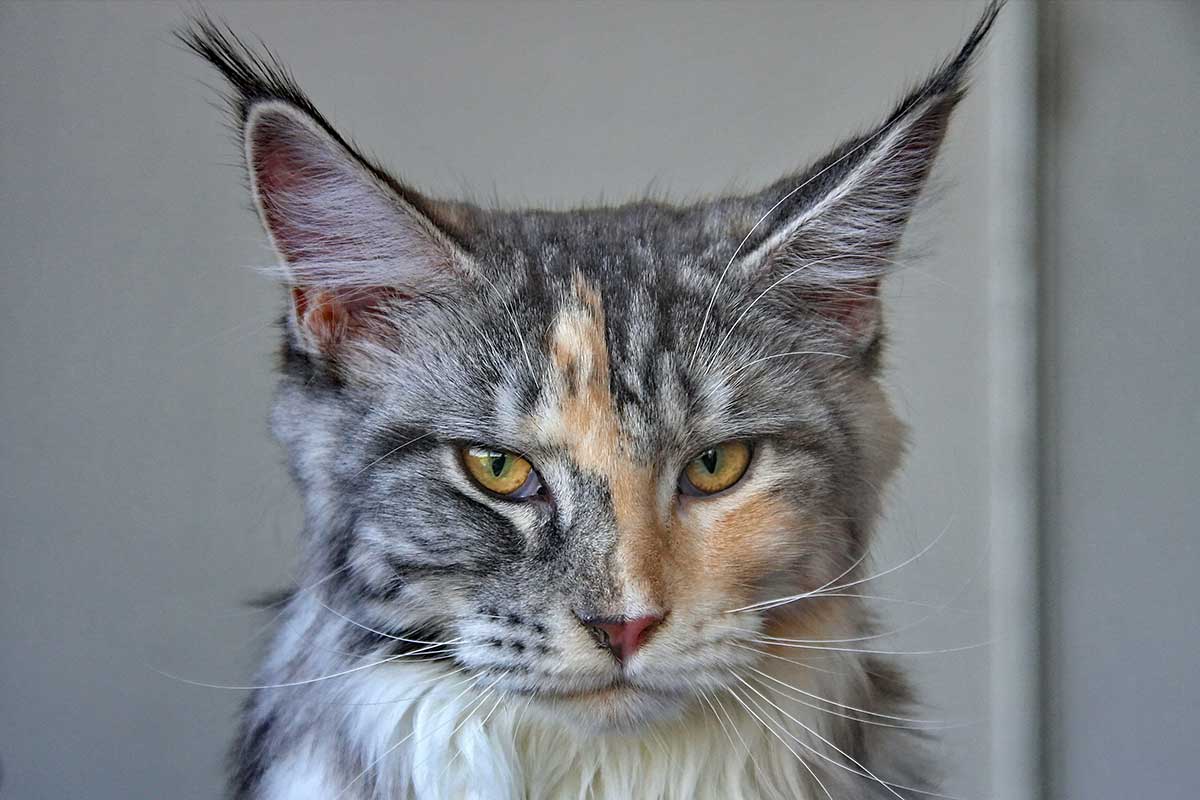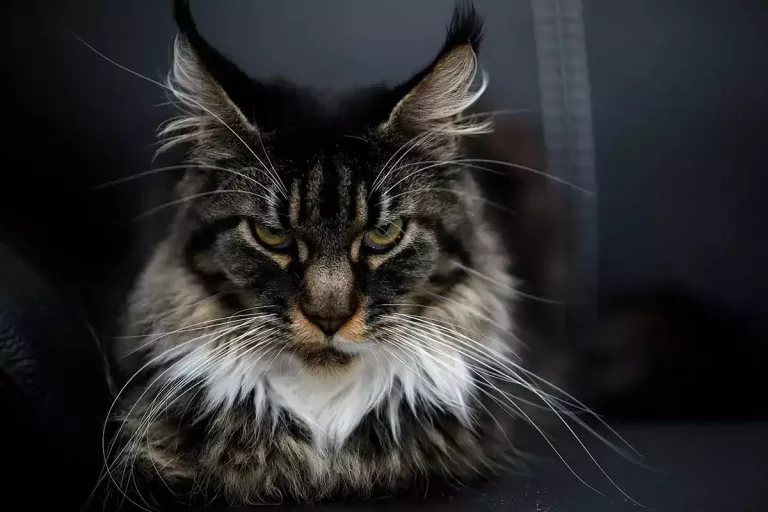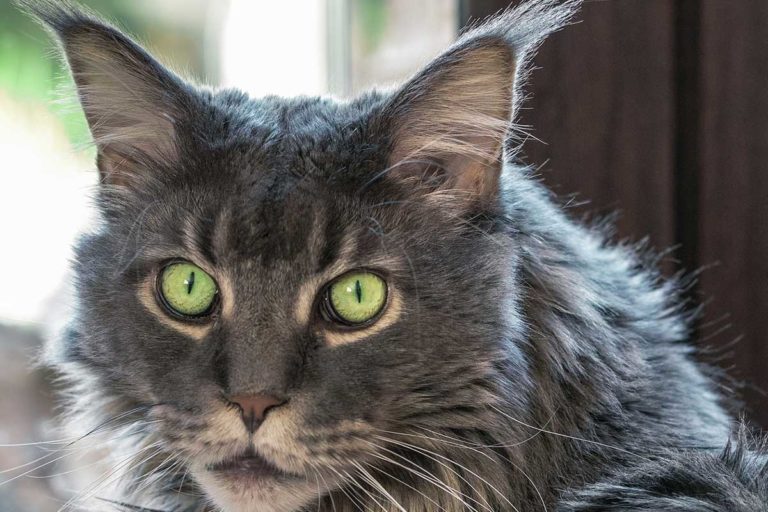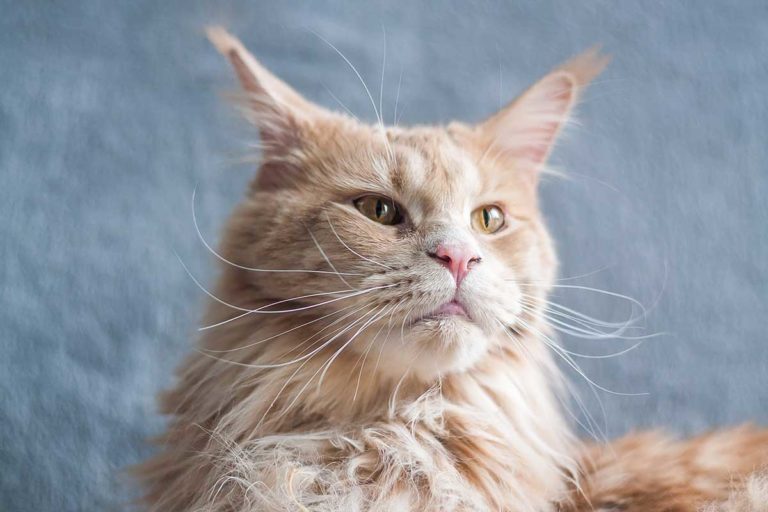
The Maine Coon cat is one of the most famous cat breeds in New England and most of the United States. They are the strongest, hairiest and largest of all domesticated cat breeds kept in homes throughout the Western world. In addition to their good looks and sweet personality, their history is also quite mysterious! Their origins are more folk tale and theory than fact. Some might even say they are the myths of the Maine Coon.
As one of the “original breeds of cats” in the United States, the Maine Coon is known to have adapted to the harsh winters and the natural, wild environment of the state of Maine. The cold weather and the distances between human settlements in Maine have kept the Maine Coon breed from interbreeding for hundreds of years. This is primarily due to the small number of other cats in the area and a direct experiment in Darwin’s theory of survival of the fittest. Unfortunately, not much is known about how they got there.
There are a few theories, some more fairy tale than reality. Others are more science fiction because of their genetic improbability. Yet none of these theories have been proven and their mysterious origins are part of the Maine Coon’s strange charm.
Here are some of the most popular theories about the origins of the Maine Coon. It’s up to you to choose the story you tell about your cat. However, one undeniable fact about the Maine Coon is that it is the national animal of Maine, which is quite impressive in itself.
The Theory of Cats & Wild Animals
One of the most common theories about the origin of the Maine Coon is that it is a hybrid. There are two general strains to this theory of origin. One is that a domesticated cat crossed with a raccoon. The other is that a domesticated cat crossed with a lynx.
The first theory (cat + raccoon) is unlikely since cats and raccoons are completely different species and cannot interbreed. The second theory, that of a cat crossed with a bobcat, may seem more likely but is not. Both the cat and the bobcat belong to the family Felidae, but are not the same species. The bobcat is a species of lynx, which means that it cannot breed with normal cats.
While the hybrid theory is genetically and scientifically impossible, when it comes to appearance and personality, things can get confusing. Maine residents will tell you that the theory that the Maine Coon is half raccoon or half bobcat is an old wives tale. Similarities in fur color and thickness, love of water, lynx-like ears, all raise questions.
The cat + raccoon theory also has some influence on the name of the Maine Coon. Prior to being called the Maine Coon, it was simply called the “Maine Cat.” The addition of the second word, Coon, could have come from the raccoon abbreviation, coon, or as we will see later, from Captain Charles Coon.
This unlikely theory has been around for hundreds of years but has no evidence.
The theory of ship’s cats
The strongest theory about the origin of Maine Coon cats is that they are descendants of European ship cats. Ship captains used to keep cats on board to control mice and rats that could wreak havoc with the cargo and the workings of the ship. Some captains were so close to their long-haired cats that the kittens were very well cared for and nurtured. Some seafaring families kept a close eye on their cat families, usually retaining the color strain for generations.
Two hundred years ago, the state of Maine was a common port where ships could anchor for repairs and sailors could take a break on land. In addition, Maine was also very popular with shipbuilding companies. Many seafaring families settled in Maine’s coastal towns, taking their prized cats with them. Some captains also retired to the area, taking their feline families with them.
These cats may have been one of the few European long-haired breeds. The most mentioned in connection with this theory are the long-haired Angora breeds. It is believed that these seafaring cats would later become the beloved Maine Coon. People always say that Maine Coons are large rodents, which gives even more weight to this theory.
Captain Charles Coon and his cats
Among the theories about ship’s cats, one particular story seems to stand out from the rest. In the 1800s, there was a ship’s captain named Charles Coon. While his name fits very well with the origin story of the Maine Coon cat, there is no evidence that this is not another folk tale. The story of Captain Charles Coon and his long-haired cats could be the story of any sea captain, but this one is memorable.
When Captain Charles Coon came to anchor in the ports of the New England coast, including Maine, his cats also came ashore. The story goes that they mated with the local feral cats and when long-haired kittens began to appear in litters all along the coast, they were called Coon’s Cats because they looked so much like the captain’s cats.
Is the Captain’s name a coincidence or did he really name the cat breed? No one is entirely sure.
Viking cats
There is another variable to the ship cat theory, which states that British and French ships brought long-haired cats on board to control mice, then abandoned them in Maine. Some Maine Coon theorists believe that these furry creatures are descendants of Norwegian forest cats. These would have made their way to the United States on Scandinavian ships for company and control of mice. Nordic explorers arrived in the United States long before other Europeans, so if this theory is true, Maine Coon cats would be a much older native species.
While all the theories about ship cats seem highly probable, there is no concrete evidence for any of them and the stories have become more folk tales than “true origin” stories. It really depends on what part of New England you are in. Each town will have its own Maine Coon cat origin story, most likely a version of one of the ones we mention here.
Marie Antoinette and her angora cats
The most colorful and interesting of all the Maine Coon origin myths is the one that has to do with guillotines, big wigs and a little cake.
In the days of French royalty, and Marie Antoinette’s extravagant tenure at Versailles, Turkish and Persian Angora cats were common pets. Sometimes they were even considered pests, because of the speed with which they reproduced and took over homes. King Louis XVI is said to have used the cats as hunting targets to amuse himself with his friends.
While Marie Antoinette and her family were incarcerated, the ship’s captain and his sailors loaded the ship with royal furniture, royal wallpaper, the finest clothing and, according to theorists, probably a family of angora cats. All attempts at rescue failed, resulting in the beheading of Louis XVI and then Marie Antoinette.
Pendant que Marie-Antoinette et sa famille étaient incarcérées, le capitaine du navire et ses marins ont chargé le navire de meubles royaux, de papier peint royal, de vêtements les plus raffinés et, selon les théoriciens, probablement d’une famille de chats angoras. Toutes les tentatives de sauvetage échouent, entraînant la décapitation de Louis XVI puis de Marie-Antoinette.
When the royal family was executed and dissolved, the ship led by Samuel Clough left France in haste and sailed to its intended destination in Maine. There, in the coastal town of Wiscasset, the captain’s wife was waiting with a large house ready to welcome her royal guests. The huge mansion was furnished with all of Marie Antoinette’s royal possessions and opulent decorations. This house still exists and is known as the “House of Marie Antoinette”. It was once a museum but is no longer a private residence and cannot be visited.
This story of the near survival of Marie Antoinette and her family is a fact, but what remains a mystery is the presence of the Angora cats on Samuel Clough’s ship. If Maine Coon cats are descendants of Marie Antoinette’s royal angora cats, it would make a great story, but there is no real documented proof, only speculation.
Polydactyl Maine Coon cats
Much of the history of the Maine Coon cat is related to the genetic trait of polydactyly. A polydactyl cat is a cat that has more toes than normal on each of its legs. This trait dates back to the first known Maine Coon cats. This trait is also hereditary. Most polydactyl Maine Coon cats will have polydactyl kittens and this can continue for generations.
Polydactyl legs are not dangerous to cats and are fully functional. Historians believe that this is a trait inherited from ship cats who needed more balance and grip than land cats. This theory goes hand in hand with the theory of the origin of Maine Coons, which are the descendants of sea cats.
The polydactyl trait in Maine Coons is particularly well known as part of their history as it has influenced their appearance and participation in cat shows. In addition, it has greatly influenced the way they are carefully bred by the Maine Coon community.
Maine Coon show cats
The history of Maine Coon fancy cats participating in cat shows has been extensively documented by Mrs. E. R. Pearce, herself the owner of a Maine Coon named Captain-Jinks of the Horse-Marines. In fact, this black and white Maine Coon is the first recorded in written literature and is a household name in Maine Coon communities.
Mrs. Pearce’s detailed records show that in 1878, a dozen Maine Coon cats were entered to compete in a Boston cat show but did not win. In 1895, a Maine Coon brown tabby owned by Mrs. E. N. Barker and named Cosey won first place at the Great Madison-Square Garden Cat Show in New York. Maine Coons continued to make regular appearances at cat shows in Boston, New York and even Chicago, until the more exotic Persian longhairs began to attract attention.
For about 60 years, the Maine Coon breed stayed close to home. Cat owners inherited Maine Coon families and some breeders took care to keep the breed intact. It was not until the 1950’s that the Maine Coon returned to the show circuit. It was at this time that the polydactyl gene began to influence the preference of Maine Coons in shows. At first, cats with the polydactyl gene were not allowed to show simply because of the aesthetic factor of the extra toes.
It was later, around the 1970’s, that polydactyl Maine Coon cats were accepted into shows, protected by the Maine Coon Polydactyl Standard, but it was not yet widespread. It was unfortunate, but as show breeders tried to breed Maine Coons without the polydactyl gene, it began to disappear. It wasn’t until the early 2000’s that Maine Coon breeders were discovered who had tried to keep the polydactyl gene intact. Other breeders from around the world have joined them in maintaining the gene for future generations of Maine Coon cats.
The Mysterious History of the Maine Coon Cat and Why it’s One of the Top Breeds
If you own a Maine Coon cat, you should know by now that your cat is very special. The history and origins of Maine Coon cats are so full of mystery and speculation that it makes them even more intriguing. With their lynx ears, large paws and banded tails, these gentle giants can be the true royalty of a human household.
When someone admires your Maine Coon, tell them one of their unlikely origin stories. Start with the Scandinavian Vikings and Norwegian forest cats, and end with Marie Antoinette and her royal Angora cats.
How can a native cat breed carry so much interesting folklore, in addition to its unmistakable charm, is not something that can simply be wiped off their fur when groomed. Maine Coon cats will always carry the secret of their Maine origins in their extra toes and gentle demeanor.


